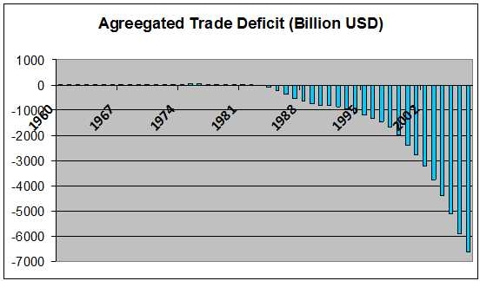Dec. 11 (Bloomberg) -- The most important U.S. tax tip to remember this year: make sure your return is accurate, as the Internal Revenue Service is looking for every dime it can get, said tax attorney Ian Comisky.
“Because of a huge deficit and major enforcement initiatives by the IRS, an inaccurate return will have a better chance of being picked up than in prior years,” said Comisky, a partner at the Philadelphia office of law firm Blank Rome LLP.
The U.S. budget deficit grew to a record $455 billion this fiscal year and the Congressional Budget Office estimates it will reach $408 billion for the first two months of fiscal year 2009.
IRS Commissioner Doug Shulman said in a Dec. 8 speech to tax lawyers in Washington that the agency will “remain vigilant to ensure that wealthy individuals don’t use offshore accounts to avoid paying their U.S. taxes.”
People with incomes above $500,000 a year are more likely to cheat on their taxes than those with lower incomes, according to a paper published in September by University of Michigan business professor Joel Slemrod and IRS economist Andrew Johns, based on unpublished IRS data from 2001.
Uncertainty regarding the economy and possible tax measures by President-elect Barack Obama, including a campaign pledge to raise the long-term capital gains tax to 20 percent from 15 percent for households that earn more than $250,000, has many taxpayers wondering whether to accelerate or defer income and deductions.
Dismal Year
There are steps taxpayers can take to make sure they make the most of a dismal year while still following the rules, planners say.
“Always think about tax planning over a two-year horizon, at a minimum,” said Jackie Perlman, senior tax research analyst for Kansas City, Missouri-based H&R Block Tax Institute. Filers should estimate what their income will be and any big purchases they will make over the next couple of years, she said.
A 39 percent drop in the Standard & Poor’s 500 Index this year may present an opportunity for investors to restructure their portfolios. Stocks that have performed poorly can be “harvested” to offset capital gains. If losses exceed capital gains, up to $3,000 can be deducted from taxable ordinary income for married couples who file jointly. Additional losses can be carried over to offset gains in future years.
Wash Rule
Alan Skrainka, chief market strategist at Edward Jones & Co., the brokerage firm based in St. Louis, said investors need to buy similar investments after selling to avoid “moving out and missing a market rebound.” Buyers also should be aware of the so-called wash-sale rule, which prevents repurchase of the same security or fund before or after 30 days from the selling date.
Beware of buying a mutual fund before it makes its yearly capital gains distribution, which is usually in mid-December, said Helen Modly, a fee-only financial planner at Focus Wealth Management, Ltd. in Middleburg, Virginia. Payout dates are generally posted on a fund’s Web site.
Record mutual-fund withdrawals have forced managers to sell their profitable stocks to meet redemption requests, triggering distributions and possible capital gains, even if the fund has lost value.
“If you buy in right before distributions, some of the money you bought into the fund with will be returned to you as taxable income,” Modly said. She also advised reporting income as diligently as possible, saying “this is not the year to go into the gray area on your return.”
AMT Rules
Tax filers should be aware of rules concerning the alternative minimum tax, as some regular deductions don’t apply. Initially created to target the highest earners, the AMT now affects about 4 million taxpayers because it hasn’t been adjusted for inflation. Tax-planning software and online calculators at Web sites such as http://www.hrblock.com are usually equipped to assess AMT liability.
For 2008, married joint filers who earn less than $69,950 are exempt from the AMT. Employees who exercise and hold incentive stock options offered by their employer can often land in AMT territory, said Perlman of H&R Block.
Charitable giving can help lower tax liability. Donors must itemize their deductions and have receipts for donations over $250, according to Kim Wright-Violich, president of San Francisco-based Schwab Charitable. Checks made out to charitable organizations must be postmarked by Dec. 31 to be deductible this year.
IRA Donation
Taxpayers aged 70 and a half and older who don’t need their mandatory IRA distributions can donate up to $100,000 directly to charity under a tax provision extended through 2009. Although the donation isn’t deductible, it is not included as part of income. To qualify, the distribution can only be made to a public charity, not a donor-advised fund or private foundation.
Donors should remember that different rules apply to non- monetary assets, such as artwork, real estate, yachts and airplanes, which should always be appraised, said Wright- Violich. The title of ownership must be transferred from the donor to the charity before the end of the year to get a tax deduction for the same year.
This year and through 2009, joint filers who don’t itemize deductions, but pay real estate taxes, will get an additional standard deduction of up to $1,000 depending on the real estate taxes paid.
“Just report income correctly and don’t be too aggressive with deductions,” said Comisky, co-author of “Tax Fraud and Evasion.”
“The IRS is the last government agency you want to have problems with.”
To contact the reporter on this story: Alexis Leondis in New York aleondis@bloomberg.net.
Last Updated: December 11, 2008 12:12 EST










![[Carl Icahn]](http://s.wsj.net/public/resources/images/OB-CT935_icahn1_D_20081205182309.jpg) Associated Press
Associated Press ![[Al Jaeger]](http://s.wsj.net/public/resources/images/HC-GN108_Jaeger_BV_20081207171659.gif)



